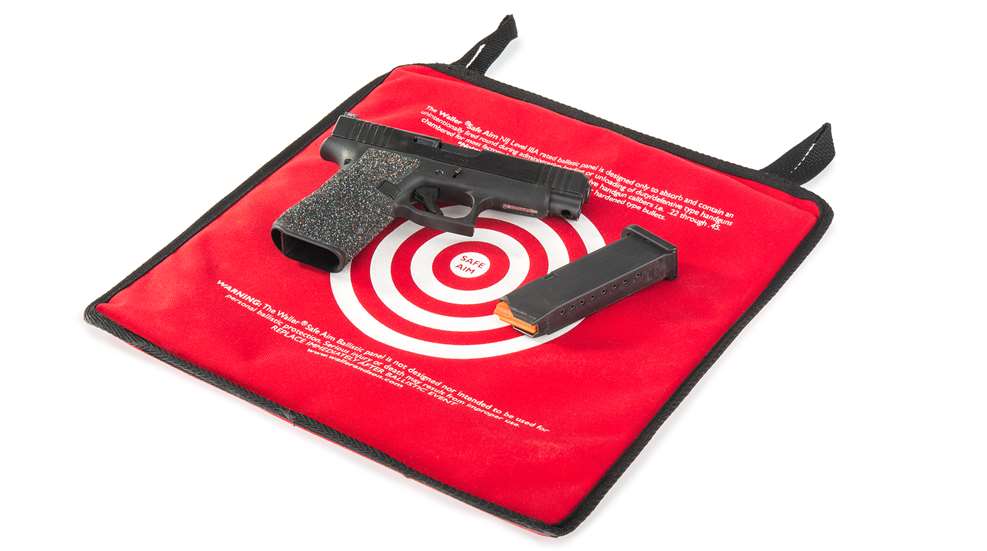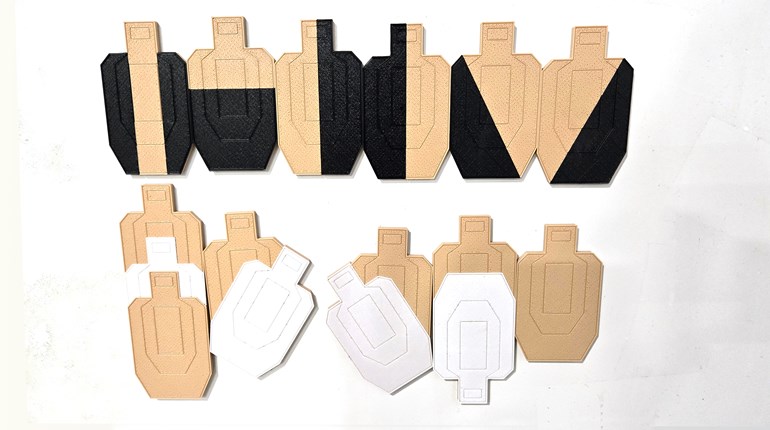
Given the ammunition-availability situation of recent times, many shooters learned the value of dry practice as part of their regular personal-defense program. Practicing the basics of defensive marksmanship with an unloaded firearm can improve shooting skills, and actually serves as a shortcut to getting better scores and performance with live ammo on the shooting range.
As with all things regarding firearms, safety is the most important consideration. Negligent discharges only occur when we are not paying full attention to safety concerns. In dry practice, the gun simply has to be unloaded, and I don’t care what a person does to safely ensure that. You can unload and then check the gun several times. Have a buddy check the gun, too, if that helps. Some even unload and then put all of the ammunition in another room.
In my case, I visually inspect the handgun several times just to make sure. In the case of a semi-automatic, I drop the magazine out and make sure no rounds are in it. Then, I lock the slide back and then visually inspect the chamber to make sure it is empty. Then I stick my finger into the chamber just to make sure that I haven’t missed anything. In short, do whatever it takes to make sure you have a completely empty firearm before proceeding with a dry-practice session.
Dry practice gives us the opportunity to practice grip, sight alignment and trigger press without the distraction of muzzle blast and recoil. Starting from the holster or the low-ready position, we practice breaking the shot just as soon as our sights come onto the target. Too often, I see shooters bring their gun on target and then hesitate as they double check their sight alignment. This should all be one swift motion, without hesitation. In a real-world situation, the only reason we would stop short of breaking the shot is if the target is no longer a threat.
The shooter can also cut time off of their response if he or she learns the point at which the trigger resets. With practice, the finger never goes off of the trigger and it allows the trigger to move forward only to the point that it resets, at which time the next shot is fired. This habit is much more easily accomplished during regular dry-practice sessions.
A smooth, quick pistol presentation is obviously critically important to surviving a violent attack. As long as that gun is in your holster, it isn’t doing you much good. Unfortunately, many gun ranges will not allow shooters to work from the holster. Again, here is where dry practice allows a person to work on developing the perfect draw stroke.
The idea is to get the gun from the holster to the target without any undue motion or wasted time, and it takes practice to accomplish this. It is also a good idea to practice while wearing whatever covering garment is usually worn. The defensive shooter may also want to practice moving to the left or right while drawing in order to spoil an attacker’s aim.
I have long thought that a defensive holster should be of a type and carried in a location that the gun can be drawn with either hand, because the strong-side hand may become disabled or be otherwise occupied. Most good defensive schools have their students shoot with the support hand but, for safety reasons, don’t teach the students to draw with that hand because it is difficult to do without covering other shooters on the firing line. Dry practice, while working alone, is the perfect time to practice this move.
When carrying on the hip, or anywhere around the waistline, the shooter may reach across their body or behind the back to reach the handgun. The support-hand draw can also be accomplished when using a shoulder holster or even an ankle holster; it just takes practice. It also helps the shooter evaluate their carry method, and may lead to an informed change in holsters or carry location.
I like the idea of scheduling dry-practice sessions three or four times a week. And, I think it is a good idea to keep them fairly short; 10 to 15 minutes is plenty of time if the person stays really focused. It is a good idea to decide ahead of time on one or two particular skills to be practiced in a single session; work on those and then quit.
Finally, dry practice is even a good way to start a live-fire session on the shooting range. The shooter can spend five minutes in dry work on a target, honing the basics, before loading up and punching holes. After all, practicing and then applying the basics is what makes a good defensive shooter.
There is no question that dry practice will pay dividends for the defensive shooter. The key is to stay focused during practice and always make safety priority one.




































